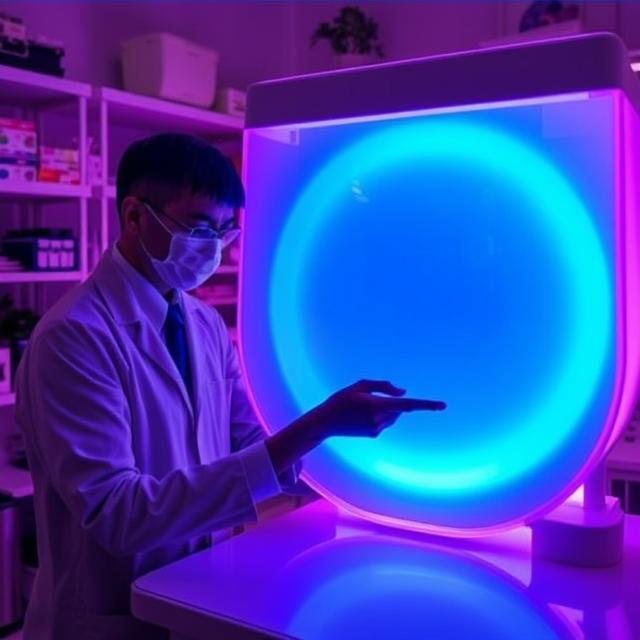In a remarkable breakthrough, a group of scientists in the United States claims to have unlocked a color previously invisible to the human eye without the aid of technology. This newly perceived hue has been given the name “olo,” and it has only been seen through the use of highly specialized equipment. Although olo cannot be witnessed with the naked eye, those few who have experienced it describe it as resembling a profoundly vivid teal.
Understanding the Discovery of Olo
The discovery emerged from collaborative work between experts from two prestigious American universities. Their research aimed to push the boundaries of human perception by developing a method to simulate a visual experience beyond the natural range of human vision. They devised a special technique, playfully named “Oz,” after the fictional world of illusion and wonder described in classic literature.
“Oz” uses pulses of laser light that are delicately aimed at the retina, targeting specific cells responsible for detecting color. By employing this method, the scientists succeeded in bypassing the natural limitations of human sight, enabling test subjects to perceive olo a color no one had ever observed before without technological assistance.
How Humans Normally See Color
Human color perception is made possible by three types of cone cells found in the retina: S cones, which are sensitive to short (blue) wavelengths; M cones, which respond to medium (green) wavelengths; and L cones, which detect longer (red) wavelengths. These cells work together to interpret a vast range of colors, but they also overlap significantly, meaning that no single cone usually acts entirely alone when exposed to natural light.
When light enters the eye, signals from the cone cells are transmitted through intricate neural pathways, processed first by the retina and then sent to the visual cortex of the brain. The complex interactions of these signals allow humans to perceive the colorful world around them but also impose limits on what we can see.
Breaking the Boundaries with Technology
One of the major challenges in human vision is the fact that there is no naturally occurring wavelength that can stimulate only one type of cone cell, such as the M cone, without activating the others. Realizing this, the research team wondered what it would look like if they could isolate stimulation to just the M cones.
To achieve this, they developed the Oz device, which precisely targets individual photoreceptor cells using finely tuned microbursts of laser light. The technique requires extreme stabilization, as even the tiniest movement could disrupt the targeting of a single cell. Oz had originally been developed to study eye diseases by allowing researchers to observe and interact with specific cells in the retina. However, it also opened the door to exploring color perception in ways previously thought impossible.
Through a series of carefully controlled experiments, researchers used Oz to stimulate only the M cones, allowing test subjects to experience olo for the first time.
What Exactly is Olo?
Olo is not a “new” color in the physical sense it has always existed in the broader electromagnetic spectrum. However, it lies outside the visible range that human eyes are naturally capable of perceiving. With technological assistance, the team was able to trick the brain into experiencing a color that, until now, remained hidden from human perception.
Those who have seen olo describe it as a vibrant, deeply saturated blue-green similar to teal but far more intense. Subjects reported that even the most vivid natural colors they had previously encountered seemed dull by comparison. The experience of viewing olo left a strong impression on the participants, highlighting the extraordinary potential of human perception when augmented by technology.
Who Has Seen Olo?
Only five individuals have experienced the sight of olo so far four men and one woman, all of whom had normal color vision. Three of them were directly involved in the research, while the remaining two were unaware of the purpose of the experiments beforehand, ensuring unbiased observations.
The emotional response to seeing olo was striking. Those who encountered it described a sense of wonder, as though witnessing a completely new dimension of reality. Yet, even after the experience, they found it challenging to describe olo precisely to others who had not seen it, much like trying to explain color to someone who had been blind since birth.
Can Olo Be Seen in Everyday Life?
At present, experiencing olo outside of the laboratory is impossible. Displays such as smartphones, televisions, or even virtual reality headsets cannot replicate the color, as they are designed to operate within the traditional visible spectrum. The technology needed to display olo would require manipulating human vision at the cellular level something well beyond the capabilities of today’s consumer devices.
For now, the only way to experience olo is through direct stimulation of the retina using the Oz device under highly controlled laboratory conditions.
Potential Applications for Color Blindness
The researchers are optimistic that their technology could eventually offer new solutions for individuals with color vision deficiencies. The most common form of color blindness, known as deuteranomaly, results in a reduced sensitivity to green light. By selectively stimulating the appropriate cones, a modified version of the Oz device could, in theory, correct or improve color perception for these individuals.
However, significant challenges remain. The current equipment is large, delicate, and expensive. Miniaturizing it for everyday use would require major advances in optics and engineering. Furthermore, achieving the stability necessary to accurately stimulate individual cones in a moving, blinking human eye presents formidable technical hurdles. Nonetheless, the possibilities opened up by this research inspire hope for future breakthroughs.
The Nature of Color Perception
Understanding how we perceive color requires examining three essential components: the physical properties of light, the neurological processes in the brain, and the social or linguistic ways in which we categorize and describe colors.
Light exists across a vast spectrum of wavelengths, only a small fraction of which are visible to the human eye. Our brains process these wavelengths into what we interpret as color. Cultural and linguistic factors then assign specific names to these perceptions, shaping how we communicate about color.
Differences in individual biology also mean that no two people experience color exactly the same way. A well-known example of this phenomenon occurred when an image of a dress went viral, dividing viewers between those who saw it as white and gold and others who saw it as blue and black. Differences in lighting, perception, and brain interpretation all contributed to the confusion.
Such examples illustrate that color is not an objective reality but rather a shared human experience shaped by biology, environment, and culture.
How Animals See the World
The way humans perceive color is just one of countless variations in the animal kingdom. Many species see the world in ways that are entirely alien to human experience.
Dogs, for instance, have only two types of cone cells and can mainly perceive shades of yellow and blue. Their vision is more limited compared to humans, yet perfectly suited to their evolutionary needs.
In stark contrast, the mantis shrimp, a small marine creature, possesses an astonishing 12 types of color receptors, far more than humans. This enables them to detect not only a wider range of colors but also ultraviolet and polarized light. However, despite their rich visual toolkit, mantis shrimps process color differently and are less capable of blending colors to perceive intermediate shades like humans do.
These examples serve as a reminder that the visible world varies dramatically between species and that what we see is only a small slice of the broader reality.
The Future of Color Exploration
The discovery of olo represents more than just a scientific curiosity; it hints at the vast potential of human perception when paired with cutting-edge technology. It raises profound questions about what else might be hidden just beyond the limits of our natural senses waiting to be discovered.
Future research could explore additional hues that lie outside of normal human vision, perhaps revealing entire new categories of color experience. Advances in fields like neuroscience, optics, and bioengineering could even allow for the enhancement of human senses in ways that currently seem like science fiction.
As we continue to develop technologies that interface directly with our biological systems, the line between natural perception and technological enhancement will blur. Discoveries like olo remind us that the universe is filled with wonders far beyond our ordinary experience and that our journey of exploration has only just begun.



